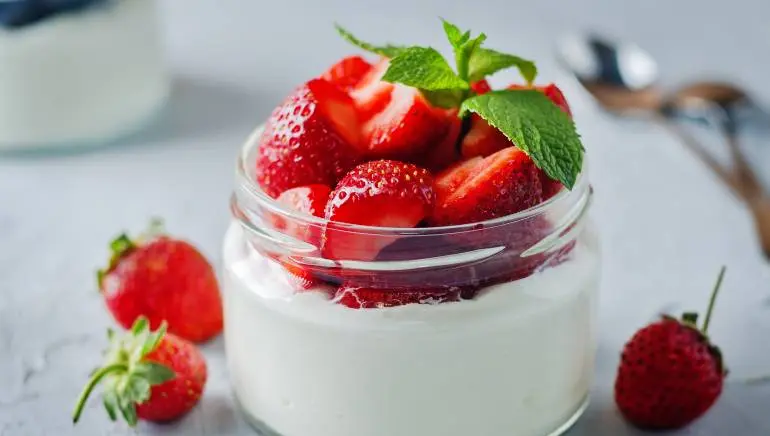If you have type 2 diabetes or are at risk of developing diabetes, it's important to consider the impact of your diet on your blood sugar levels. Managing your blood sugar levels is crucial in preventing and managing diabetes, as well as reducing the risk of complications such as heart disease. In this article, we will explore whether smoked mackerel is a good food choice for diabetics.
The Benefits of Oily Fish
Eating oily fish has been shown to help regulate blood sugar levels. A study published in the British Journal of Nutrition found that meals that included oily fish resulted in significantly lower blood sugar levels. Oily fish such as salmon, sardines, herring, anchovies, and mackerel are rich in omega-3 fatty acids, specifically DHA and EPA. These omega-3 fats have been linked to improved heart health and reduced inflammation.
Diabetes increases the risk of heart disease and stroke, and research suggests that regular consumption of fatty fish can lower this risk. In addition, fish is also a great source of high-quality protein, which helps you feel full and stabilizes blood sugar levels.
The Role of Green Leafy Vegetables
Green leafy vegetables, such as broccoli, spinach, cabbage, and kale, are highly nutritious and have a minimal impact on blood sugar levels. They are low in digestible carbohydrates, meaning they do not significantly raise blood sugar. Leafy greens are also rich in vitamins and minerals, including vitamin C. People with diabetes often have lower vitamin C levels, and increasing intake can reduce inflammation and protect heart and eye health.
Cruciferous vegetables like broccoli and sprouts contain a substance called sulforaphane, which has been found to reduce blood sugar levels in people with diabetes.
The Benefits of Avocados
Avocados are an excellent choice for people with diabetes. They have been associated with better diet quality, reduced risk of diabetes, and lower body weight. Avocados contain a unique fat molecule called avocatin B (AvoB), which has been found to reduce insulin resistance. Including avocados in your diet can help manage blood sugar levels and promote overall health.
Eggs for Blood Sugar Control
Eggs are a great breakfast option for people with diabetes. A study published in the American Journal of Clinical Nutrition found that a high-fat, low-carb breakfast of eggs can help manage blood sugar levels throughout the day. Eggs are highly nutritious, containing essential vitamins and minerals. They can also decrease inflammation, improve insulin sensitivity, and have a positive effect on cholesterol levels. The high protein content in eggs helps you feel fuller for longer.
The Role of Chia Seeds
Chia seeds are high in fiber and low in digestible carbs, making them a suitable food choice for diabetics. They contain viscous fiber, which can lower blood sugar levels by slowing down the rate of food absorption in the gut. A study involving type 2 diabetics found that chia seeds supported weight loss and helped maintain good blood sugar control.
Beans for Diabetes Management
Beans are not only nutritious but also affordable. They are a good source of vitamins, minerals, and fiber. The high fiber content in beans results in a low glycemic index, which is beneficial for managing diabetes. Including beans in your diet can help control blood sugar levels and provide essential nutrients.
High Protein Yogurt for Diabetes
Greek yogurt and high-protein yogurts can help reduce the risk of developing diabetes. A long-term study involving over 100,000 participants found that daily yogurt consumption was associated with an 18% lower risk of developing type 2 diabetes. Yogurt can also aid in weight loss and improve body composition in people with type 2 diabetes. The high levels of calcium, protein, and conjugated linoleic acid (CLA) found in yogurt can help keep you full for longer.
The Benefits of Nuts
Nuts are a great snack option for people with diabetes. They are high in fiber and low in digestible carbs. Regular consumption of nuts has been shown to improve blood sugar levels, reduce inflammation, and lower bad cholesterol (LDL) levels. Nuts can also improve heart health in people with diabetes.
The Role of Flaxseeds
Flaxseeds are rich in omega-3 fats and fiber, including lignans, which can decrease the risk of heart disease and improve blood sugar management. Clinical trials have shown a significant association between flaxseeds and a reduction in blood glucose levels.

The Benefits of Vinegar
Vinegar, particularly apple cider vinegar, has many health benefits, including reducing blood sugar levels. A study involving over 300 people with type 2 diabetes found that daily consumption of vinegar lowered blood sugar levels. Starting with 1-4 teaspoons of vinegar in a glass of water before each meal can help regulate blood sugar levels.
Foods to Avoid
While it's important to focus on foods that help regulate blood sugar levels, it's equally important to avoid certain foods that can cause blood sugar spikes or negatively impact heart health. Sugary foods and drinks, refined carbohydrates, breakfast cereals high in added sugar, and smoothies/juices with high sugar content should be limited or avoided. Portion control and understanding the glycemic index (GI) of foods can also help manage blood sugar levels.
When it comes to managing diabetes, diet plays a crucial role. Including foods such as oily fish, green leafy vegetables, avocados, eggs, chia seeds, beans, high-protein yogurt, nuts, flaxseeds, and vinegar can help regulate blood sugar levels and reduce the risk of complications. It's important to avoid foods high in sugar and refined carbohydrates. Incorporating these nutritious and blood sugar-friendly foods into your diet can contribute to better diabetes management and overall health.
If you want to know other articles similar to Best foods for diabetics: smoked mackerel, avocados, eggs, and more you can visit the Nutrition category.


Related Articles